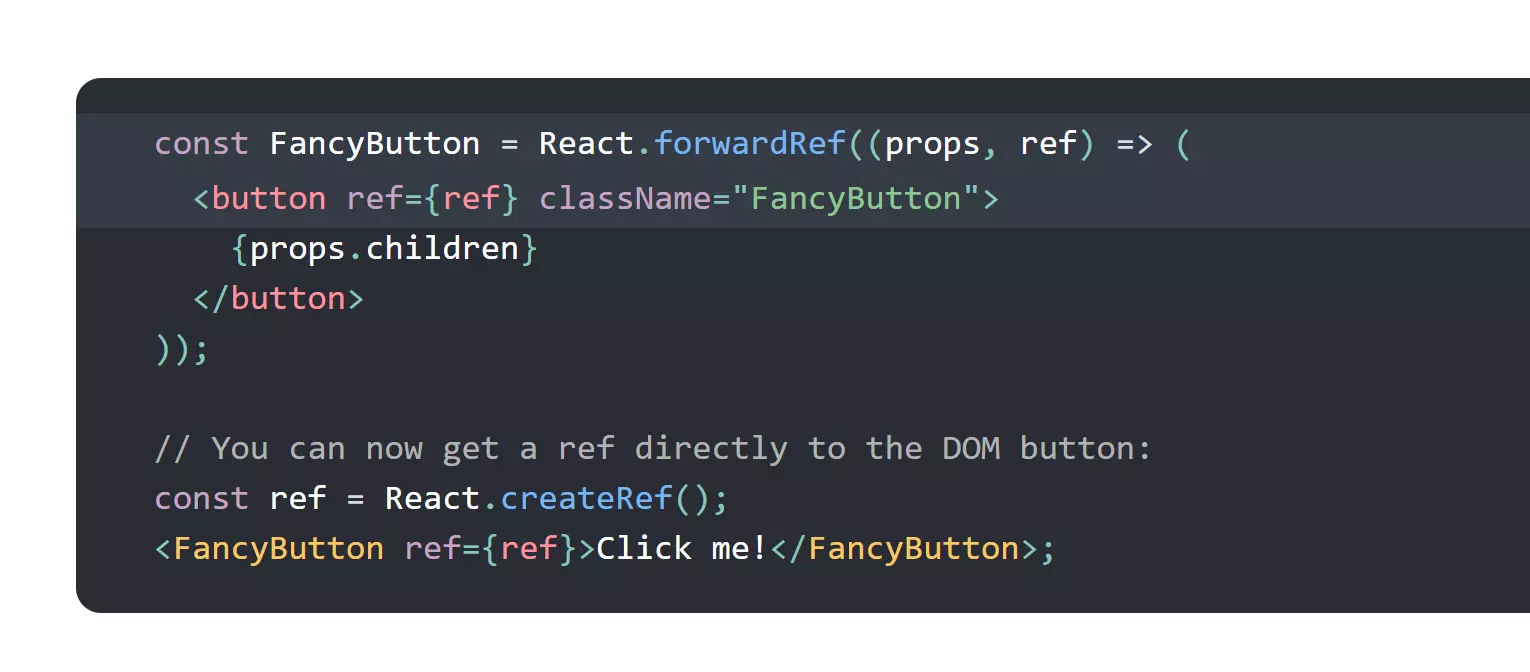Why do we need React.forwardRef

The best thing about React props is the ability to send different data structures from parent to child without any code configuration like @input etc. But why do we need an extra construct React.forwardRef for passing ref? let us find out.
Where is React.forwardRef used?
It's used when we are passing ref as a prop to functional components
What is React.forwardRef?
It is a way to create a component. At a high level, React forwardRef takes 2 arguments
- props that are to be passed to the child component
- ref that needs to be passed to the child component
Why do we need React.forwardRef?
In functional components, we cannot instantiate the components. Instantiating components is a feature offered by class-based components in React. But we want to be able to use Ref in functional components. The ability to instantiate functional components and assign the value to ref.current is provided by React.forwardRef
If you are using class-based components, then we need not use React.forwardRef to accept ref as a prop.
What is the structure of the ref
Let's understand who we create a ref
- Inside functional components, we use
useRefhook. - Outside of functional components, we use
React.createRef
The ref object has the following structure
{
current: null
}
When the component is instantiated, the element reference is stored in current. When the component is destroyed, the current points to null.
To access the ref contents we can do
const {value} = ref?.current;
Why do we need refs?
We need ref to do DOM stuff like selection, querying, and animations. Instead of using document.getElementById or any DOM queries, we can use ref which are reliable in React.
Can we pass multiple refs to React.forwardRef?
We can pass through a callback function. The return of the callback function should contain the ref objects.
const multiRef = () => ({
ref1: React.createRef<HTMLInputElement>(),
ref2: React.createRef<HTMLInputElement>()
})